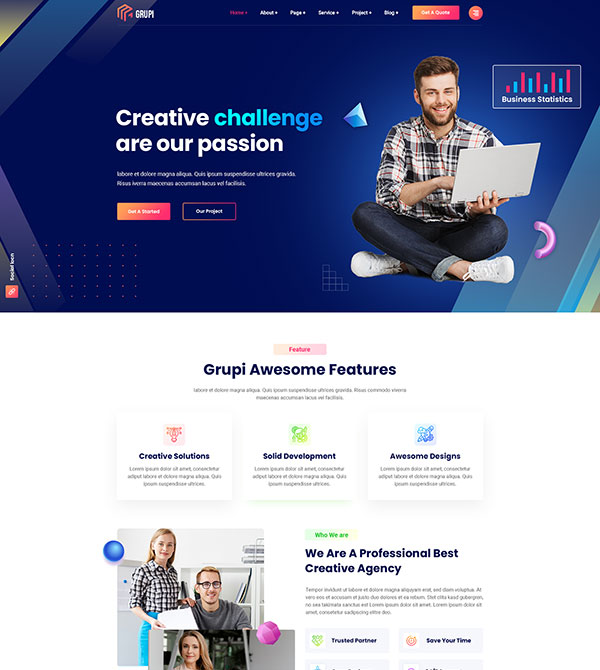Implementing precise, actionable data-driven A/B tests requires more than just setting up split variants. To truly optimize conversion rates, marketers and analysts must develop a robust, technically sound framework for data collection, segmentation, statistical analysis, and iteration. This article explores advanced, practical methods to elevate your A/B testing process—rooted in expert-level techniques and real-world scenarios—ensuring your tests generate reliable insights and sustainable growth.
Table of Contents
- Designing Data Collection Frameworks for Precise A/B Testing
- Segmenting Your Audience for Granular Analysis
- Applying Statistical Techniques for Valid Results
- Creating and Managing A/B Test Variants with Technical Precision
- Analyzing and Interpreting Test Results at a Micro-Interaction Level
- Iterating and Refining Tests Based on Data Insights
- Practical Implementation Steps and Case Study
- Reinforcing the Value of Granular Data-Driven Testing in Broader Optimization Strategies
1. Designing Data Collection Frameworks for Precise A/B Testing
a) Selecting the Right Metrics to Track for Conversion Optimization
Start by defining core micro-conversion metrics aligned with your business goals. For example, if your goal is form submissions, track not only the final submission but also intermediate actions like button clicks, form field focus, and time spent on critical sections. Use a hierarchical KPI model that captures both macro and micro behaviors to identify subtle UX impacts.
b) Setting Up Accurate Data Capture: Tools and Techniques
Implement event tracking using tag managers (e.g., Google Tag Manager) with custom dataLayer variables. For high fidelity, combine this with server-side tracking to mitigate client-side blocking or ad blockers. For example, embed unique session identifiers and timestamps to correlate actions precisely.
c) Ensuring Data Integrity and Consistency Across Variants
Use a centralized data pipeline that consolidates data from all variants into a single warehouse (e.g., BigQuery, Snowflake). Validate data consistency with checksum validation and sampling checks at regular intervals. Automate anomaly detection scripts in Python or R that flag inconsistent data patterns.
d) Handling Data Privacy and Compliance Considerations
Implement GDPR and CCPA compliant data collection by anonymizing personally identifiable information (PII) and securing user consent before tracking. Use techniques like data masking and encryption during data storage and transmission. Maintain detailed audit logs to demonstrate compliance during audits.
2. Segmenting Your Audience for Granular Analysis
a) Defining Relevant User Segments Based on Behavior and Demographics
Use clustering algorithms (e.g., K-Means, DBSCAN) on behavioral data—such as session duration, page depth, device type—and demographic data to identify meaningful segments. For example, segment users by engagement level (high/low), device category, or referral source to uncover differential responses.
b) Implementing Dynamic Segmentation Strategies During Tests
Leverage real-time data streams to update segments dynamically using server-side logic. For instance, employ a stream processing framework like Apache Kafka with Spark Streaming to reclassify users based on recent behaviors, enabling adaptive test targeting and analysis.
c) Utilizing Segment Data to Interpret Variant Performance
Apply multivariate analysis to compare segment-specific conversion rates, confidence intervals, and lift. Use stratified bootstrap sampling to estimate variability within segments, ensuring that observed differences aren’t due to sampling bias.
d) Case Study: Segment-Specific Insights Leading to Better Conversion Tactics
A SaaS company discovered that mobile users on Android responded poorly to a new CTA button style. By segmenting by device and OS, they tailored version-specific designs, resulting in a 12% lift in conversions within that segment, illustrating the power of granular analysis.
3. Applying Statistical Techniques for Valid Results
a) Choosing the Appropriate Statistical Tests (e.g., Chi-Square, T-Test)
Select tests based on data type and distribution. For binary conversion data, use the Chi-Square test. For continuous metrics like time on page, employ a t-test or Mann-Whitney U test if data isn’t normally distributed. Always verify test assumptions before proceeding.
b) Calculating Sample Sizes for Reliable Results
Use statistical power analysis tools—such as G*Power or custom Python scripts—to determine minimum sample sizes. Input parameters include expected lift, baseline conversion rate, desired power (commonly 80%), and significance level (typically 0.05). This prevents underpowered tests that yield unreliable conclusions.
c) Managing Variability and Outliers in Data Sets
Apply robust statistical techniques such as winsorization or transformation (log, Box-Cox) to handle outliers. Use control charts and variance analysis to monitor data stability over time, preventing false positives caused by external shocks or random fluctuations.
d) Automating Statistical Analysis with Tools and Scripts
Develop scripts in Python (using statsmodels or scipy) or R that automatically perform hypothesis testing, compute confidence intervals, and generate reports. Integrate these scripts into your data pipeline for real-time or scheduled analysis, reducing manual errors and accelerating decision-making.
4. Creating and Managing A/B Test Variants with Technical Precision
a) Developing a Version Control System for Variants
Use Git-based workflows to track changes in your variant codebases. Tag each release with descriptive labels, and maintain branch strategies (e.g., feature branches, hotfixes) to facilitate rollbacks if issues arise. Document all modifications thoroughly to enable reproducibility and auditability.
b) Implementing Feature Flags for Seamless Variant Deployment
Use feature flag management tools (e.g., LaunchDarkly, Flagship) to toggle variants remotely without code redeployments. This allows for incremental rollout and quick rollback in case of bugs or unexpected behavior, ensuring a seamless user experience.
c) Ensuring Consistent User Experience During Testing
Implement cookie-based or session-based assignment algorithms that persist user allocation to a specific variant throughout their session. Avoid cross-variant contamination that can bias results, especially in multi-device contexts.
d) Troubleshooting Common Technical Issues in Variant Delivery
Common issues include caching problems causing stale variants, incorrect user targeting, or slow deployment pipelines. Use real-time monitoring tools and browser debugging (e.g., Chrome DevTools) to diagnose and fix such issues promptly. Regularly audit your deployment logs and user feedback for anomalies.
5. Analyzing and Interpreting Test Results at a Micro-Interaction Level
a) Tracking Clickstream Data and User Flows
Use session replay tools (e.g., Hotjar, FullStory) combined with clickstream analytics to map detailed user paths. Identify bottlenecks or unexpected drop-off points that standard metrics might miss, enabling micro-optimization.
b) Monitoring Micro-Conversions and Engagement Signals
Define micro-conversions such as scroll depth, hover time on key elements, or interaction with tooltips. Track these signals to detect behavioral shifts that precede macro conversions, helping you refine UI elements for better engagement.
c) Identifying Subtle Behavioral Changes That Impact Conversion
Apply behavioral analytics techniques like sequence analysis or Markov chains to understand how small behavioral shifts influence ultimate actions. For example, a slight increase in hover time on a CTA button may correlate with higher conversion probability.
d) Using Heatmaps and Session Recordings for Deep Insights
Leverage heatmaps to visualize attention and interaction zones. Combine with session recordings to observe user hesitation or confusion points, informing micro-UX tweaks that have outsized impacts on conversion.
6. Iterating and Refining Tests Based on Data Insights
a) Prioritizing Hypotheses for Further Testing
Use a scoring matrix that considers potential impact, confidence level, and ease of implementation. For example, prioritize micro-UI tweaks that showed promising signals in initial analyses, even if the statistical significance is marginal, to validate insights quickly.
b) Designing Follow-Up Tests to Confirm Findings
Implement *A/A* tests or multi-variant experiments to verify whether observed effects are consistent. For example, test different microcopy variants on CTA buttons to confirm which wording truly influences click-through rates.
c) Avoiding Common Pitfalls: Overfitting and Data Snooping
Use pre-registered hypotheses and maintain strict significance thresholds (e.g., Bonferroni correction for multiple tests). Limit the number of sequential tests to prevent false discoveries, and document all testing decisions transparently.
d) Documenting Lessons Learned for Continuous Improvement
Maintain a testing log with detailed annotations: hypotheses, variant descriptions, data collected, statistical results, and implementation notes. Use this repository to inform future experiments and avoid repeating mistakes.









